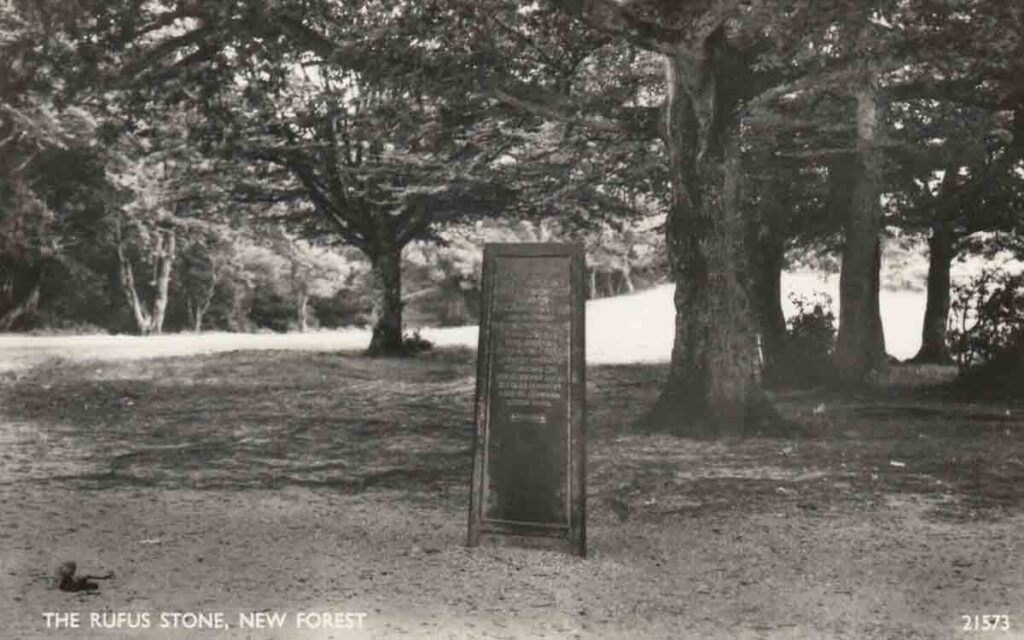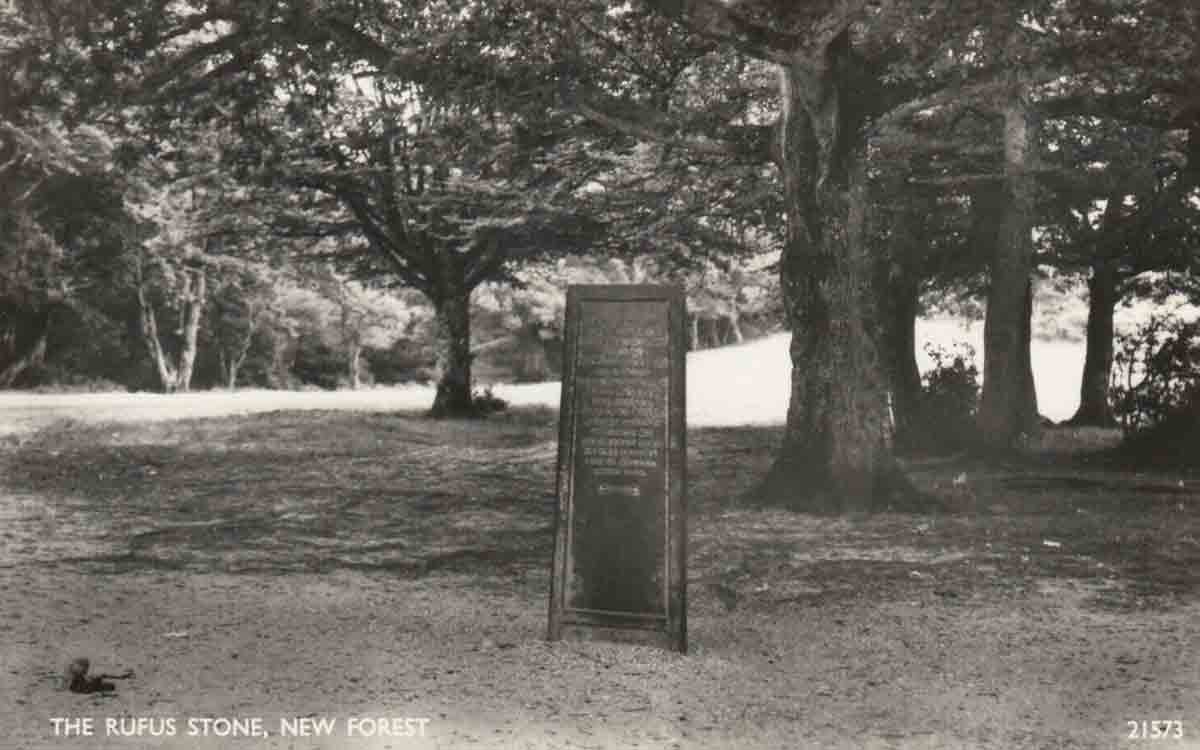CHRISTINE MILLER looks at the Rufus Stone, New Forest, tries to unravel the mystery of the death, and possible murder of King William II, whose spirit is still said to be unable to rest.

King William II aka William Rufus
The Rufus Stone is situated near Minstead in the area of New Forest, South England. The stone is said to mark the spot where the favourite son of William the Conqueror (or William the Bastard as he was locally known) died following being hit by an arrow in 1100 CE.
King William II was also known as William Rufus allegedly due to his ruddy complexion and flaming red hair, and he was initially a comparatively popular monarch, but fast became a disliked figure after displaying an amount of tyrannical rule.
The king had an obsessive love of hunting and New Forest was the favoured location for his beloved blood sport.
It was also here that he met with his untimely fate.
The Death of The King – Accident or Design?
In August 1100, William was part of a hunting party at New Forest, where at some point during the hunt he ended up alone in the company of Sir Walter Tyrell. The official version of events is that Tyrell took aim at a stag but his arrow ricocheted off a tree and hit William “on the breast of which he instantly died.”
There is some conjecture as to whether this story is in fact true, with many hypothesizing that Tyrell deliberately hit William and caused his death under the orders of William’s younger sibling Henry, who, following the death of his brother, travelled quickly to become king before anyone could contest it.
Whether he meant to or not, the fact remained that Tyrell had indeed very much caused the king’s death. Terrified of repercussions, he fled the scene (not before quickly washing the blood from his hands at nearby Ocknell Pond), and speedily travelling to France – although he needn’t have rushed as no one was too concerned with the king’s death, but it was probably best to be safe.
William’s body was found by a man who placed it on his cart and took it to Winchester, where the king was giving a swift and simple funeral at the cathedral. The cart was said to have bounced and jerked so violently along the rough terrain that a trail of blood from William’s body marked the entire journey to Winchester.
The Rufus Stone’s Location and Inscription
The Rufus Stone was erected in the late 18th century to commemorate the fallen king, allegedly at the location where, some centuries previously, Charles II was told that William had perished. However, most historians share a consensus that the incident occurred on the Beaulieu Estate, some miles away from where the memorial stone is located.
The full inscription of the stone reads:
“Here stood the oak tree, on which an arrow shot by Sir Walter Tyrrell at a stag, glanced and struck King William the Second, surnamed Rufus, on the breast, of which he instantly died, on the second day of August, anno 1100.
“King William the Second, surnamed Rufus being slain, as before related, was laid in a cart, belonging to one Purkis, and drawn from hence, to Winchester, and buried in the Cathedral Church of that city.
“That the spot where an event so memorable might not hereafter be forgotten, the enclosed stone was set up by John Lord Delaware who had seen the tree growing in this place. This stone having been much mutilated, and the inscriptions on each of its three sides defaced. This more durable memorial with the original inscriptions was erected in the year 1841, by WM Sturges Bourne, Warden.”
Curses, Omens and Hauntings
There alleges that a curse was put on William the Conqueror for his cruel practices of seizing land and settlements by force; there were a few other victims of the forest as Rufus’ niece and older brother had both died in the vicinity, so perhaps the curse ran through the family.
William’s spirit is said to follow his blood trail and walk the journey that his body made to Winchester, and that he is doomed to repeat the journey, over and over again, for all of eternity.
Ocknell Pond, where Tyrell washed his hands of the king’s blood is said to turn red on every anniversary of the death of William II.
As well as this, within the New Forest and close to the Rufus stone there is said to be a black dog (similar to the infamous Black Shuck) known by some as “Tyrell’s Hound”, who is an omen of death to any who have the misfortune to witness the snarling beast.
Have you visited the Rufus Stone in New Forst? Let us know in the comments section below.



